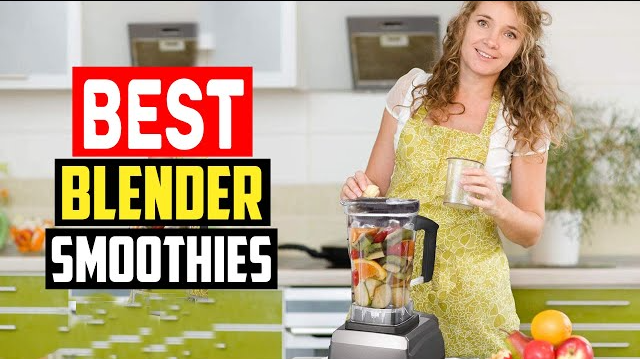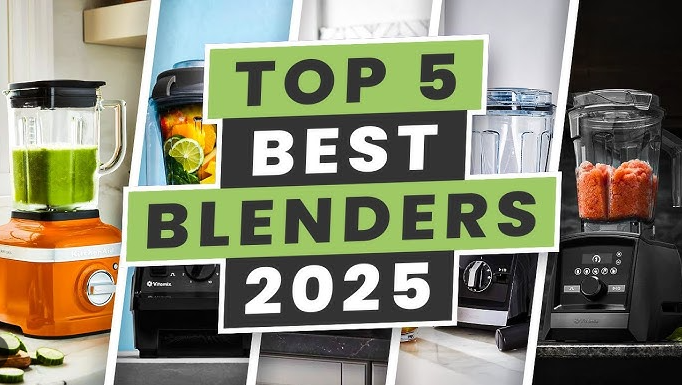When it comes to kitchen appliances, the question of can a blender replace a food processor often arises for home cooks looking to streamline their tools. Both blenders and food processors are versatile, but they excel in different tasks. In this detailed guide, we’ll explore whether a blender can truly substitute for a food processor, comparing their functions, strengths, and limitations. We’ll also provide blender setup, blender troubleshooting, and blender maintenance tips to maximize your blender’s performance for food processor tasks. For more kitchen appliance insights, check out our blender guide.
Blender vs. Food Processor: Understanding the Basics
A blender and a food processor may look similar, but their designs and purposes differ significantly. Understanding these differences is key to answering can a blender replace a food processor.
- Blender: Designed for blending, pureeing, and emulsifying, blenders excel at creating smooth textures for liquids like smoothies, soups, and sauces. They typically have a tall, narrow jar with fixed blades and a powerful motor (600–1500 watts).
- Food Processor: Built for chopping, slicing, shredding, and mixing, food processors handle a wider range of tasks, including dough kneading and precise cutting. They feature a wide bowl, interchangeable blades, and discs, with motors ranging from 450–1000 watts.
While blenders can handle some food processor tasks, their ability to fully replace one depends on your cooking needs. Let’s dive into a detailed comparison.
Blender vs. Food Processor: Key Functions Compared
This section evaluates how blenders perform in tasks typically associated with food processors, addressing the core question: can a blender replace a food processor.
1. Blending and Pureeing
Blender: Blenders are the gold standard for pureeing, creating silky-smooth textures for smoothies, soups, and sauces. High-powered models like the Vitamix 5200 or Nutribullet Pro 900 blend ingredients like kale, frozen fruit, and nuts in 30–60 seconds.
Food Processor: Food processors can puree but often produce chunkier results due to their wider bowl and less aggressive blade action. They’re better for thicker mixtures like hummus or pesto.
Verdict: Blenders outperform food processors for smooth purees, making them ideal for smoothies and creamy soups. Blender Tip: Add liquid to achieve a smooth vortex.
2. Chopping and Dicing
Blender: Blenders struggle with precise chopping, as their blades are designed for blending, not cutting. Pulsing can roughly chop vegetables like onions or carrots, but results are uneven, and over-blending risks pureeing. Models like the Ninja BN701 can handle small chopping tasks but lack precision.
Food Processor: Food processors excel at chopping and dicing with dedicated blades and discs, producing uniform pieces for salsas, salads, or stir-fries.
Verdict: Food processors are superior for chopping and dicing. Blenders can manage basic tasks but aren’t a full replacement.
3. Slicing and Shredding
Blender: Blenders lack slicing or shredding discs, making them unsuitable for tasks like slicing cucumbers or shredding cheese. Attempting these tasks risks pureeing or uneven results.
Food Processor: Equipped with adjustable slicing and shredding discs, food processors quickly and uniformly slice vegetables or shred cheese, ideal for meal prep.
Verdict: Food processors are essential for slicing and shredding; blenders cannot replicate these functions.
4. Dough and Pastry Mixing
Blender: Most blenders are not designed for dough kneading, as their blades and narrow jars are ill-suited for thick, dry mixtures. High-powered models like the Blendtec can mix small batches of dough, but it’s not their strength, and overuse may strain the motor.
Food Processor: Food processors with dough blades efficiently knead bread, pizza, or pastry dough, handling sticky, dense mixtures without overheating.
Verdict: Food processors are far better for dough mixing; blenders are limited and risk reduced blender motor life.
5. Grinding and Milling
Blender: High-powered blenders like the Nutribullet Ultra or Vitamix with milling blades can grind nuts, seeds, or grains into flour or nut butter, though they may require frequent scraping for thick blends.
Food Processor: Food processors can grind nuts or seeds but often produce coarser results unless equipped with a specific grinding blade. They’re less efficient for nut butters.
Verdict: Blenders, especially high-powered ones, can match or outperform food processors for grinding and milling.
Can a Blender Replace a Food Processor?
Based on the comparison, a blender can partially replace a food processor for tasks like pureeing, blending smoothies, and grinding nuts or seeds. However, it cannot fully substitute for chopping, slicing, shredding, or dough mixing due to its design limitations. If your kitchen tasks focus on smoothies, soups, or nut butters, a blender may suffice. For meal prep involving chopping, slicing, or dough, a food processor is indispensable.

Best Blenders for Food Processor Tasks
If you’re considering using a blender for food processor tasks, here are two top models that come closest to bridging the gap, based on their power and versatility:
1. Nutribullet Full-Size Blender Combo
Price: ~$120–$150
Specifications: 1200-watt motor, 64 oz jar, 24 oz and 32 oz cups, 7.2 lbs, BPA-free, dishwasher-safe.
Key Features: Includes single-serve cups, three speeds, pulse function, and a tamper for thick blends.
Performance: The Nutribullet Combo excels at pureeing smoothies, soups, and sauces, and can grind nuts or seeds into butter with minimal scraping. Its pulse function allows basic chopping for salsas or dips, though results are less uniform than a food processor. It’s a great portable blender option with its single-serve cups. Blender Tip: Use the pulse function sparingly for chopping to avoid over-blending.
2. Ninja BN701 Professional Plus Blender
Price: ~$120–$140
Specifications: 1400-watt motor, 72 oz jar, 9 lbs, BPA-free, dishwasher-safe, three Auto-iQ presets (smoothie, ice crush, frozen drinks).
Key Features: Powerful motor, stacked blades, and large capacity for batch prep.
Performance: The Ninja BN701 handles pureeing, grinding, and light chopping well, producing smooth smoothies and nut butters in 30–60 seconds. Its pulse function can roughly chop vegetables, but it’s not precise for slicing or shredding. Blender Maintenance: Clean immediately to prevent residue buildup in the large jar.
Blender Setup for Food Processor Tasks
To use a blender for food processor tasks, proper blender setup is crucial:
- Unpack and Clean: Rinse the jar, blades, and lid before use to remove dust.
- Connect Blender: Secure the jar or cup to the base, ensuring it locks (e.g., Ninja’s click-lock system).
- Layer Ingredients: For pureeing, add liquids first, then soft ingredients, followed by tough ones. For chopping, use minimal liquid and pulse sparingly.
- Test Run: Blend water to check for leaks or motor issues.
Blender Safety Tip: Never insert utensils into a running blender, and secure lids tightly to prevent spills.
How to Use a Blender for Food Processor Tasks
Maximize your blender’s potential with these blender tips:
- Pureeing: Add enough liquid (e.g., water, broth) to create a vortex for smooth soups or sauces.
- Chopping: Use the pulse function in short bursts for onions or carrots, checking frequently to avoid pureeing.
- Grinding: Use small batches of nuts or seeds with minimal liquid, scraping sides as needed.
- Avoid Overloading: Fill the jar to 50–60% capacity to prevent motor strain and extend blender motor life.
For more blender tips, visit blending tips.
Blender Troubleshooting for Food Processor Tasks
When using a blender for food processor tasks, you may encounter issues. Here are common blender troubleshooting solutions:
- Blender Won’t Start: Ensure the jar is locked and the power cord is secure. For cordless models, check battery charge.
- Stuck Ingredients: Pause, scrape the jar, or add more liquid. Use a tamper if included.
- Overheating: Stop blending and cool for 15–20 minutes. Avoid blending thick mixtures for over 60 seconds.
- Uneven Chopping: Pulse in short bursts and use smaller ingredient pieces for better control.
Blender Maintenance for Food Processor Tasks
Regular blender maintenance ensures your blender lasts when tackling food processor tasks:
- Clean Immediately: Blend warm water with a drop of dish soap for 30 seconds, then rinse. Most jars are dishwasher-safe.
- Hand-Wash Blades: Use a brush to clean blades to prevent dulling or injury.
- Inspect Seals: Check for wear in blade seals, especially after frequent nut butter or chopping tasks.
- Store Dry: Dry all parts to prevent mold or corrosion.

Blender Safety Tips for Food Processor Tasks
Prioritize blender safety when using a blender for food processor tasks:
- Secure Lids: Lock lids tightly to prevent spills, especially with liquid-heavy blends.
- Handle Blades Carefully: Use a brush to clean sharp blades to avoid cuts.
- Avoid Hot Liquids: Cool ingredients like soups before blending to prevent pressure buildup.
- Stable Surface: Use a non-slip surface or suction-cup base to prevent movement.
Can a Blender Replace a Food Processor? Final Verdict
So, can a blender replace a food processor? The answer depends on your cooking needs:
- Yes, for Specific Tasks: A blender can replace a food processor for pureeing (smoothies, soups, sauces) and grinding (nut butters, flours). High-powered models like the Nutribullet Combo or Ninja BN701 can handle light chopping tasks like salsa or dips.
- No, for Precision Tasks: Blenders cannot match food processors for slicing, shredding, or dough kneading due to their fixed blades and narrow jars.
- Best Approach: If your kitchen tasks focus on smoothies, sauces, or nut butters, a blender like the Nutribullet Combo may suffice. For frequent meal prep involving chopping, slicing, or dough, a food processor is worth the investment.
Choosing the Best Blender for Food Processor Tasks
If you decide to rely on a blender, opt for a high-powered model with a pulse function and large jar, like the Nutribullet Full-Size Blender Combo (~$120) or Ninja BN701 (~$140). These models offer versatility for pureeing, grinding, and light chopping, making them the best blender for smoothies and some food processor tasks. For travel-friendly options, consider a portable blender like the Nutribullet Flip (~$66), though it’s limited to basic blending. Explore more options at blender reviews.
Conclusion: Blender or Food Processor?
In the Nutribullet vs Magic Bullet debate, we saw Nutribullet’s power edge, but in the broader question of can a blender replace a food processor, the answer is nuanced. Blenders excel at pureeing and grinding, making them a viable substitute for smoothie lovers or those making sauces and nut butters. However, for precise chopping, slicing, shredding, or dough kneading, a food processor remains unmatched. With proper blender setup, blender maintenance, and blender safety, a high-powered blender can handle many tasks, but a food processor is essential for diverse meal prep. For more guidance on choosing the best blender, visit blending tips.